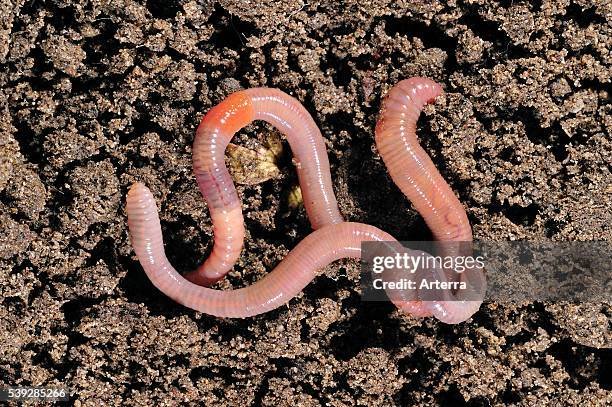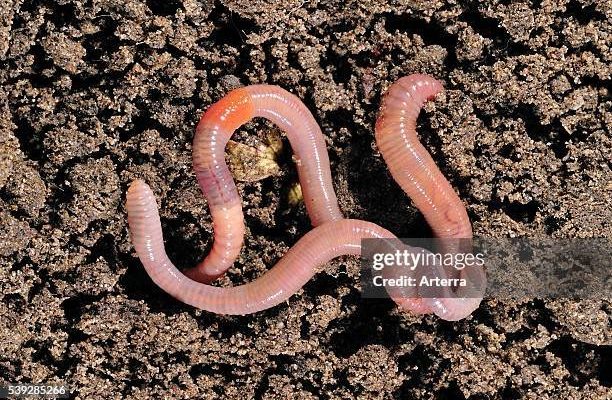
Much like a well-oiled team, different types of earthworms serve various purposes in your garden. Whether it’s aerating the soil, breaking down organic matter, or improving drainage, each species has its unique way of contributing to the garden ecosystem. By understanding which types of earthworms are common in gardens, you can appreciate their importance even more. Plus, knowing how these little helpers operate can help you maintain a more vibrant garden.
Common Types of Earthworms in Gardens
There are several types of earthworms that you might encounter in your garden. Each has its unique characteristics and roles. Here’s a closer look at a few of the most common ones.
1. Nightcrawlers (Lumbricus terrestris)
You’ve probably heard of nightcrawlers whether from local bait shops or when chatting with gardening enthusiasts. These large earthworms can grow up to 8 inches long and are typically found in the top layer of soil. Nightcrawlers are known for their ability to aerate the soil and improve drainage, making them excellent for garden health.
Nightcrawlers live deeper in the ground compared to other earthworms, which means they can help bring nutrients from deeper soil layers to the surface. This role is vital for the overall fertility of your garden. You might be wondering how to attract these helpful critters to your garden. Adding organic matter, like compost or leaf litter, can create an inviting environment for them!
2. Red Wigglers (Eisenia fetida)
If you’re into composting, you’ve likely come across red wigglers. These smaller, reddish-brown worms are commonly used in vermicomposting due to their appetite for kitchen scraps and organic waste. Red wigglers thrive in moist, rich environments, which makes them perfect for compost bins.
What sets red wigglers apart is their efficiency in breaking down organic material. They can consume their body weight in food each day, turning waste into nutrient-rich castings that nourish your plants. Honestly, if you’re looking to boost your compost game, these worms are a gardener’s best friend.
3. Earthworms (Aporrectodea species)
Earthworms, or Aporrectodea, are another type you might find in your garden. These worms are adaptable and can be found in various soil types. They typically measure around 4 to 6 inches in length and are known for their ability to improve soil structure.
These worms help by breaking down organic matter and creating channels in the soil as they tunnel. This process enhances aeration and drainage, which in turn promotes healthier plant growth. If you’ve ever noticed how crumbly your soil feels after a good rain, thank the earthworms for that!
How Earthworms Benefit Your Garden
Now that we’ve talked about some common types of earthworms, let’s explore how they benefit your garden. You might be surprised at just how important these little guys really are.
Aeration and Soil Structure
One of the primary roles of earthworms is soil aeration. As they burrow through the soil, they create tiny tunnels that allow air, water, and nutrients to reach plant roots more effectively. This aeration is crucial for plant health because it prevents soil compaction, which can suffocate roots and hinder growth.
Good soil structure also promotes drainage, reducing the risk of waterlogging, which can harm roots. You might think about it like this: just as we need to breathe to thrive, plants need access to air and water to grow strong and healthy.
Nutrient Cycling
Earthworms are incredible recyclers in the garden. As they consume organic matter, they break it down and turn it into nutrient-rich castings. These castings are packed with essential nutrients like nitrogen, phosphorus, and potassium. When you mix these castings into your soil, you’re essentially giving your plants a balanced diet.
This process not only enriches the soil but also helps improve its overall fertility over time. You could say earthworms are nature’s little composters, turning waste into food for your plants.
Encouraging Earthworm Populations in Your Garden
If you want a vibrant garden, welcoming earthworms is essential. Here are some simple ways to encourage more of these helpful creatures to call your garden home.
1. Add Organic Matter
Earthworms love organic materials like compost, decaying leaves, and kitchen scraps. By adding these to your garden, you’ll create a welcoming environment for them. Just remember to chop larger items into smaller pieces to help speed up decomposition.
2. Avoid Chemicals
Using chemical pesticides and fertilizers can harm earthworm populations. Instead, opt for organic gardening practices. Natural alternatives are not only better for the worms but also for your garden’s long-term health.
In the grand scheme of gardening, earthworms might seem like tiny players, but their impact is mighty. From aerating the soil to cycling nutrients, these creatures do a lot of heavy lifting behind the scenes. By understanding the types of earthworms commonly found in gardens—like nightcrawlers, red wigglers, and Aporrectodea—you can appreciate their role even more.
So, the next time you’re out in your garden, take a moment to consider the busy world beneath your feet. These little soil engineers are working hard to ensure your plants thrive. With a little care and effort, you can create a habitat where earthworms flourish, making your garden all the more vibrant and fruitful.

